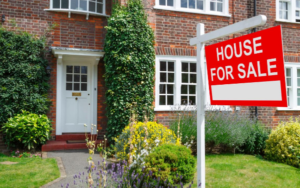
What is a mortgage and how does it work?
A mortgage is a loan from a bank or building society that is secured on the property you are buying. There are two important figures to take into consideration; the loan-to-value (LTV), which is how much you are borrowing as a proportion of the property price, and the interest rate. The lender will decide how much it is willing to lend based on the property valuation, your income and its eligibility criteria. It will also set an interest rate which is how much you must pay back each month on top of the capital repayments.
You can visit a bank or building society to find mortgages but it is also worth checking online-only brands and challenger banks. There is an important distinction between banks and building societies. Banks tend to have a wider choice of products but are more commercially minded as most have shareholders to please which critics say can get in the way of customer service and flexibility. In contrast, building societies are owned by their own customers with account holders getting a say in how they are run. Building societies or mutuals often offer competitive deals but there may be geographical restrictions and not all will offer rates online. Often the best way to ensure you are getting the best mortgage deal is to use an independent mortgage broker as they will be able to compare all of the mortgage deals available and make a recommendation. If you have not got a mortgage broker in mind, you may want to try Habito*, a specialist independent online mortgage broker.
Why is loan-to-value important?
The loan-to-value (LTV) is an important factor in getting a mortgage as if your property doesn’t fit a lender’s criteria then your application will most likely be rejected. LTVs range from 50% to up to 95% and the buyer provides the rest. For example, a 75% LTV mortgage would mean the bank lends you three-quarters of the property price and you must provide the remaining 25% as a deposit. Lenders may have maximum property values that they will lend against and the LTV could be affected if they don’t agree with your valuation at purchase or during a remortgage.
Interest rates tend to be higher on large LTVs to reflect the loan being bigger. This means you could get a 95% LTV mortgage with a low 5% deposit, however you would pay a higher interest rate than someone who is able to provide a 15% deposit for an 85% LTV loan. The interest rate you pay depends on the value of the loan and the type of product.
Mortgage types explained
Repayment/interest-only mortgage
The monthly payments on a mortgage are made up of two elements. Borrowers have to pay back the amount borrowed or the capital, known as repayments, and the interest, which is based on the interest rate attached to the product. Most combine both and are known as repayment mortgages but it is possible to only pay back the interest each month initially. These are known as interest-only mortgages and do work out cheaper on a monthly basis but the full debt must be repaid at the end of the loan term.
Tough regulations mean borrowers must have a repayment plan in place to show they can repay the full loan at the end of the term. This is to avoid an issue that emerged in the aftermath of the 2007 financial crisis, when borrowers were approved for loans that they couldn’t afford and risked not having enough value in their property or savings to repay the debt owed at the end of the loan.
Fixed-term/tracker mortgage
The two main types of mortgage are fixed-rate or trackers. A fixed-rate gives you certainty as there is a defined amount you must repay each month that is set for a certain period, typically two, five and sometimes even 10 years or longer. A fixed-rate protects you if interest rates go up as you have already locked in your repayments and they won’t change until your deal ends.
In contrast, a tracker rate mortgage follows interest rates, usually those set by the Bank of England but it can be linked to a lender’s own calculations. These can be cheap if interest rates are falling. For example, if the Bank of England base rate falls, your repayments would also drop but it also works the other way, so if interest rates rise, your mortgage repayments will get more expensive.
What fees do you have to pay on a mortgage?
Product fees
This charge comes in various guises. Some lenders will call it an arrangement or application fee and it essentially covers the cost of arranging the loan. Not all lenders charge fees but the cost can be as much as £2,000. This can be paid upfront or added to the value of the loan. Often mortgages with lower rates are accompanied by the highest fees.
Valuation fees
The bank or building society will want to value your property to check the loan reflects the property price. This can range from zero to £1,500. It is different to a home survey as it is only to confirm the value of the property, rather than spotting any structural issues.
Legal fees
A solicitor or conveyancer is required to manage the legal process of registering your mortgage. Some lenders charge for this or offer free packages but many borrowers instruct their own as there may be other work involved such as Land Registry transfers and property information forms. The average price for conveyancing on both a sale and a purchase is around £1,500.
Broker fees
A mortgage adviser can help find the most suitable deal for you and prepare your application. There may be a fee for this, usually of around £500, however there are mortgage brokers that do not charge a fee, such as specialist online mortgage broker Habito. Read our independent Habito review to find out more.
Early repayment charges
Repaying a loan early may seem prudent but there can be exit fees if you do it too soon. Fixed-rate mortgages in particular often have early repayment charges that start at around 5% of the remaining value of the loan in the first year and tend to reduce each year of the deal term.
How to get the best deal on your mortgage
Like anything, shopping around is the best way to ensure you are getting the best mortgage deal. The interest rate you pay is important but it is also worth comparing fees as these can push up the overall cost.
If you don’t have time or need help finding deals and putting together an application, a mortgage broker can help. They will often know the best lenders for different situations and can prepare and send the application for you. It is also important to ensure your credit report and score is accurate. Those with higher scores usually have a better chance of getting approved and securing the best rates. You may want to read our article: "How to check your credit report in 5 minutes".
How to get the best mortgage deal if you’re a first-time buyer
The more deposit you can put down the lower the rate you will pay, which will give you cheaper monthly repayments. But that is easier said than done. Getting on the property ladder can be tough. Banks and building societies typically lend at up to 4.5 times salary but that only gets you a mortgage of £164,749 based on the average salary of £36,611. That would give you enough for a 70% LTV mortgage based on the average £235,673 home in the UK but a first-time buyer would still need a £71,000 deposit. There are mortgage schemes that can help, such as the government Help to Buy scheme. It works by supporting the purchase of a new build property with a 5% deposit for a 95% LTV mortgage and government-backed equity loan that is interest-free for the first five years.
For more information, read "How much can I borrow on my mortgage?".
Some lenders will let parents or grandparents be a guarantor on a loan by providing some of their savings or taking security on their home, although this has become harder during the coronavirus crisis. There are savings schemes such as the Lifetime ISA which lets first-time buyers put money aside for a mortgage deposit tax-free that is then boosted by a 25% government bonus. You can read more about Lifetime ISAs as well as being able to compare the best Lifetime ISAs in our article: 'Compare the best and cheapest Lifetime ISAs'. First-time buyers also benefit from a stamp duty exemption on the first £425,000 of a purchase, so long as the home is worth £625,000 or less. Read our guide: 'How to buy a home - a guide for first-time buyers'.
How to get the best deal if you’re purchasing a new home
Similar to a first-time buyer, a larger deposit will get you a more competitive rate when moving home. Make sure you can get the best value from your current property if you need to sell it to move, as this money may be used to pay off some of your old loan (and provide equity for your next purchase). This may mean making improvements so you can sell for the best price.
Switching mortgages to get a new loan if you are moving may mean paying an Early Redemption Charge (ERC) if you are not coming to the end of a deal. This could still be worth it if you are getting a lower rate. Alternatively, some lenders may let you take your current mortgage to a new home, known as porting, as long as it meets its LTV criteria.
In both cases, whether you are getting a new mortgage or moving your old one, you will need to complete a mortgage application. A broker can help find the best deals and support your application particularly if your circumstances have changed, such as if you have gone self-employed since you had the previous mortgage.
How to get the best deal if you’re remortgaging
There are no prizes for loyalty in mortgage lending. Once a mortgage deal ends you will be moved onto a Standard Variable Rate (SVR) which is usually set higher than what you may have been paying on a fixed-rate deal. Your current lender will also contact you to offer new deals that it can switch you to.
However, it is important to shop around as there may be better deals from different lenders. Make sure you time your remortgage application so you can switch as your deal ends to avoid moving onto the pricey SVR. Many lenders will hold a rate for three to six months, so if you spot an ultra-cheap deal it may be worth getting an application approved so you don’t miss out and can switch when your current offer ends.
Also, check for any early repayment charges if you are planning to move before the end of a deal and make sure you know how much is left to repay so your new loan covers the full debt. Often if you are remortgaging with your existing lender they may cover the legal costs, as much of the work would have been done when you first took out the mortgage so the only conveyancing that is needed is updating the Land Registry and mortgage records. For more information about remortgaging, read our remortgaging guide.
How to get the best deal for a buy-to-let mortgage
The typical LTV on a buy-to-let mortgage is 75%. That means you would need a deposit of 25%, however, there are better deals available on 60% LTV mortgages, meaning a 40% deposit would unlock much better rates. Lenders will want to see evidence of the rental income you can achieve on the property you are buying. This can usually be verified by a lettings agent.
The amount you can borrow and your chances of success also depend on your age, as many buy-to-let lenders have upper age limits of 75. Therefore, it may be harder to take out a 20-year buy-to-let loan at age 60, as the bank would want it paid off by the time you are 75. Some of the best buy-to-let deals are offered through intermediary-only lenders such as The Mortgage Works and BM Solutions, so it may be worth working with a broker to source the most suitable products for you. Read our guide 'How much can I make from a buy to let property?'





